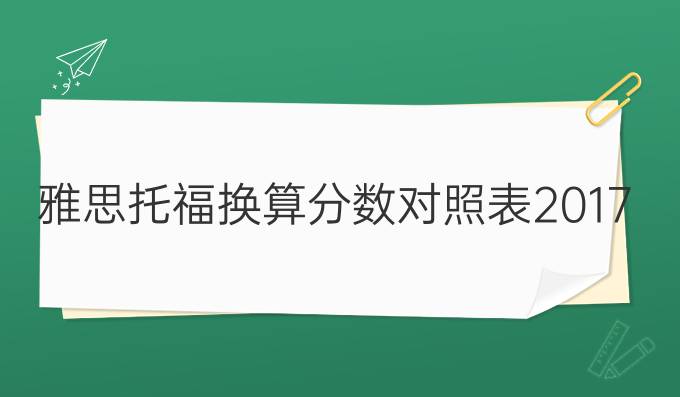朗阁海外考试研究中心的雅思培训老师为考生带来2017年2月25日的真题回顾、详细解析及备考策略,此为雅思阅读回顾部分。

朗阁海外考试研究中心 管延圻
朗阁海外考试研究中心的雅思培训为考生带来2017年2月25日的真题回顾、详细解析及备考策略,此为雅思阅读回顾部分。
|
考试日期 |
2017年2月25日 |
|
Reading Passage 1 |
|
|
Title |
The concept of childhood in the western countries |
|
Question types |
判断题 7题 简答题 6题 |
|
文章内容回顾 |
讲述了宝贝这一概念的历史由来。 The history of childhood has been a topic of interest in social history since the highly influential book Centuries of Childhood, published by French historian Philippe Ariès in 1960. He argued that "childhood" is a concept created by modern society. |
|
题型难度分析 |
篇文章从题型来看难度较低,判断属于常规必考题型,基本遵循顺序原则,定位容易;简答题相对小众一些,但也属于简单题型之一。 |
|
题型技巧分析 |
判断题的重心仍然是分辨FALSE和NOT GIVEN两者之间的差别。考生们可以回顾一下剑桥真题中的一些经典例题,思考错误的原因,多归纳多总结;简答题实际上是变换形式的一种填空题(summary), 重点仍然在于利用关键词的抓取*定位,以及答案词性的细致分析。 |
|
Reading Passage 2 |
|
|
Title |
A new Ice Age |
|
Question types |
单选题 3题 人名观点配对题 5题 填空题 5题 |
|
文章内容回顾 |
关于新冰河世纪的一些理论研究 |
|
相关英文原文阅读 |
A William Curry is a serious, sober climate scientist, not an art critic. But he has spent a lot of time perusing Emanuel Gottlieb Leutze’s famous painting George Washington Crossing the Delaware, which depicts a boatload of colonial American soldiers making their way to attack English and Hessian troops the day after Christmas in 1776. Most people think these other guys in the boat are rowing, but they are actually pushing the ice away, says Curry, tapping his finger on a reproduction of the painting. Sure enough, the lead oarsman is bashing the frozen river with his boot. I grew up in Philadelphia. The place in this painting is 30 minutes away by car. I can tell you, this kind of thing just doesn’t happen anymore. B But it may again soon. And ice-choked scenes, similar to those immortalized by the 16th-century Flemish painter Pieter Brueghel the Elder, may also return to Europe. His works, including the 1565 masterpiece Hunters in the Snow, make the now-temperate European landscapes look more like Lapland. Such frigid settings were commonplace during a period dating roughly from 1300 to 1850 because much of North America and Europe was in the throes of a little ice age. And now there is mounting evidence that the chill could return. A growing number of scientists believe conditions are ripe for another prolonged cool down, or small ice age. While no one is predicting a brutal ice sheet like the one that covered the Northern Hemisphere with glaciers about 12,000 years ago, the next cooling trend could drop average temperatures 5 degrees Fahrenheit over much of the United States and 10 degrees in the Northeast, northern Europe, and northern Asia. C It could happen in 10 years, says Terrence Joyce, who chairs the Woods Hole Physical Oceanography Department. Once it does, it can take hundreds of years to reverse. And he is alarmed that Americans have yet to take the threat seriously. D A drop of 5 to 10 degrees entails much more than simply bumping up the thermostat and carrying on. Both economically and ecologically, such quick, persistent chilling could have devastating consequences. A 2002 report titled Abrupt Climate Change: Inevitable Surprises, produced by the National Academy of Sciences, pegged the cost from agricultural losses alone at $100 billion to $250 billion while also predicting that damage to ecologies could be vast and incalculable. A grim sampler: disappearing forests, increased housing expenses, dwindling freshwater, lower crop yields, and accelerated species extinctions. E Political changes since the last ice age could make survival far more difficult for the world’s poor. During previous cooling periods, whole tribes simply picked up and moved south, but that option doesn’t work in the modern, tense world of closed borders. To the extent that abrupt climate change may cause rapid and extensive changes of fortune for those who live off the land, the inability to migrate may remove one of the major safety nets for distressed people, says the report. F But first things first. Isn’t the earth actually warming? Indeed it is, says Joyce. In his cluttered office, full of soft light from the foggy Cape Cod morning, he explains how such warming could actually be the surprising culprit of the next mini-ice age. The paradox is a result of the appearance over the past 30 years in the North Atlantic of huge rivers of fresh water the equivalent of a 10-f
分享到:

雅思托福 全套备考资料 快速入口热门雅思培训课程推荐 猜你喜欢热门话题 more
沪ICP备 17003234 号
图书经营许可证:第A7651号
版权所有:上海朗阁教育科技股份有限公司
Copyright 2005 LONGRE EDUCATION GROUP All Rights Reserved
|














